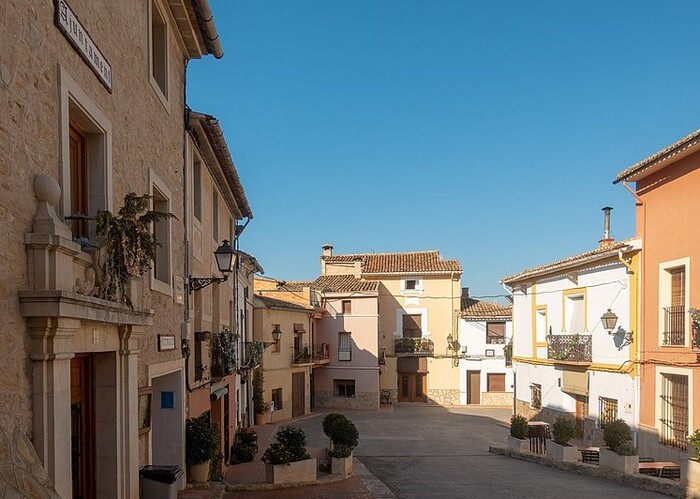VALL D’ALBAIDA – The exodus of the Spanish interior is problematic. It is with sadness that residents of countless small villages see their fellow residents leave. As a result, schools and other basic facilities are closing. To prevent this, Carrícola, a village in Valencia takes action.
Carrícola is one of 24 municipalities participating in the “Ruta 99” initiative. Each village – all with less than 100 inhabitants – is part of one or more walking routes. Their purpose is to attract new visitors. Carrícola is located at the foot of the Benicadell Mountains, in the area of the Vall d’Albaida. The mayor and residents have been fighting here for years to maintain the population. Of the nearly 100 inhabitants, 80% are older than 60 years.
Read also: Unprecedented success for rural tourism in Spain
The news about Ruta99 spread faster than the participating villages could organise themselves. Mayor Juan Salvador Miralles explains: “This Thursday a tourist arrived and we wanted to give a personal badge, but the material was not there yet”. Any initiative to combat the exodus is welcome, but Miralles is critical of the implementation. “The other governments have to listen carefully to us. Investments and subsidies only have an effect if they are precisely tailored to the needs and possibilities of each village.”
Carrícola is pioneer in the field of sustainability
Carrícola stands out because the village is truly pioneering in sustainability. Since the 1980s, farmers and horticulturists here have opted for ecological management. In 2015, they stimulated the composting of organic waste to fertilise the fields and gardens in the municipality.
Ecological water treatment plant
There is an ecological water treatment plant that filters the wastewater of the municipality without using energy or chemical products. This project, developed by the university ‘Universidad Politécnica’ in Madrid, provides water of good drinking water quality. There are solar panels on government buildings. In addition, the local government has purchased a plot to set up a local energy company.
Combination of coast and nature
Furthermore, the village connects art with nature with the ‘Biodivers’ project. Every five years since 2000, there have been exhibitions in which artists display their works of art made from biodegradable materials. More than 700 people visited the last exhibition in 2015 (the 2020 exhibition could not take place due to the pandemic).
Housing shortage in Carrícola
Mayor Miralles notes that it is difficult to get more villagers. There is a waiting list due to the housing shortage. That is a big problem, which the other villages also have to deal with. “All the houses we have are now occupied. Several municipal buildings converted into housing and the three bio-ecological houses built on the campsite have also been taken into use,” said Miralles. The way of building in the village center and the adjacent mountains do not make the growth of the village any easier. In addition, no project developers are willing to invest, and “the city council has no resources”.
Limited basic facilities
Finally, the basic facilities are also limited. The doctor only visits once a week for the aging population. A daycare centre is reportedly “not feasible”. Because there has been no primary school for three years, the five children of the village have to travel daily to the village of Atzeneta d’Albaida. The municipality takes the children to school with an electric bus and at the same time collects the ordered bread and delivers it to fellow villagers.
There is a hostel in the village. The nearby bar sells necessities. For other errands, residents have to go elsewhere. There is a pharmacy and there is now also an ATM. According to the mayor, in the fight against the exodus, the focus should mainly be on improving these kinds of facilities.


